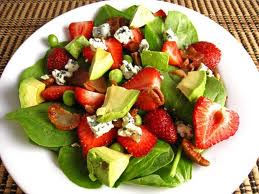Diets
- AIDS Diet
- Athletes's Diet
- Atkins Diet
- Bodybuilding Diet
- Breast Feeding Diet
- Cabbage Soup
- Cancer Patient's Diet
- Cardiac Patient's Diet
- Pediatric Diet
- Diabetes Diet
- Diet Plan
- Diet Programs
- Fitness Diet
- Cardiac Patients
- Kidney Disease Diet
- Low Calorie Diet
- Hypertension Diet
- Pregnancy Diet
- High Protein Diet
- Sports Diet
- Vegetarians Diet
- Weight Gain
- Fasting Diet
- Calorie Diets
- Celebrity Workout
- Diet for Gout
- Herbal Diets
- Zone Diet
- Herbal Phentermine
- South Beach Diet
- High Fiber
- Low Carb Diets
- Low Carb Dieting
- Low Carb Dieter Eat
- Atkins Low Carb Diet
- Atkins Low Carb Diet Program
- Monounsaturated Fats
- Food Choices Low Carb Meals
- Shopping Right Supplements
- Top 3 questions for Low Carb Dieting
- Better Food Choices
- Fluorosis
- Wu Yi Tea
- Ultra Lean Green Tea
- Acai Berry Power 500
Free Low Calorie Diet Plan
A calorie is a unit of measure for the amount of energy available in food. Just as the combustion of gasoline in the engine enables a car to travel a certain distance, the oxidation of food in the body releases a certain amount of measurable energy expressed as calories. A Calorie is not a food element. The calories are not really in the food or a part of the food. They simply represent the amount of heat and energy produced by the food.
When food is oxidized (burned) in the body it generates energy that can be utilized immediately to power the basic body processes or do muscular work; if not needed immediately this energy can be stored for future activities. All energy that is not used when available is stored in the form of fat. When the body runs out of fresh fuel for it's functions it breaks down this stored fat. If you have excess this fat remains.

Approximately 3,500 stored calories add up to one pound of body fat. And all calories are equal, whether from meat or from cake. The number of calories provided by a food depends on it's nutrient composition.
Each gram of carbohydrate in a food can be burned in the body to generate 4 calories; each gram of protein has the potential to generate 4 calories, each gram of fat contains a potential of 9 calories.
Even though calories are viewed with concern by many people, they provide the energy all of us need to breathe, digest our food, maintain our body heat, and carry out all the fundamental body functions which comprise our "basal metabolism" or basic life process. This base energy requirement, coupled with the energy required by muscular activity, determines the amount of calories a person can ingest and burn daily without creating any stored energy, or fat. Since age decreases basal metabolism most people require fewer calories as they grow older.
To serve a general guideline, an average of 12 to 15 calories per pound of body weight are needed daily for a moderately active person to exist without weight gain or loss.
Find the desired weight you should be, and compute the daily calories you need to lose or maintain your weight. Counting calories and reorganizing consumption's of familiar foods, you can lose weight gradually, sensibly and develop better eating habits.
Here is a good site; Savvy Fat Burning Food here you can learn about diet plans, published research on weight loss, articles and good old-fashioned common sense tips.
You will also find that you will be less irritable, discouraged, and less likely to revert to your former eating habits. To best accomplish weight loss on a low-calorie diet, protein, vitamins and minerals should be kept at high levels to insure vitality and preserve your health.
A balanced low-calorie diet is aimed at good nutrition. It emphasizes: lean meats, fish, poultry, low-fat milk and cheeses, whole-grain breads and cereals, fruits and vegetables, and a moderate amount of nut or vegetable oil. Fat, mostly unsaturated, accounts for about 30 % of the total calories, and carbohydrates comprise 20 % of the daily calories. Of course pasta, rich cream sauces and soups, cream cheese and butter, cakes, cookies, candies and other similar items can add up to a low- calorie day if eaten to the exclusion of other foods, but they will not add up to good nutrition and therefore do not contribute to the effectiveness of balanced dieting.
If you do the calorie computations yourself, you can select the foods you like, eliminate only those highest in calories, and then limit the overall quantity of what you eat to achieve the same ends.
When following a low-calorie diet weigh yourself only once a week.
Daily weighing reflects daily swings due to water retention and water loss and does not give you an adequate measure of your progress. Once you reach your desired weight, keep following the guidelines of 12 to 15 calories per pound per day to hold your weight constant.
